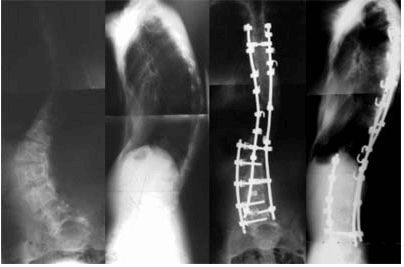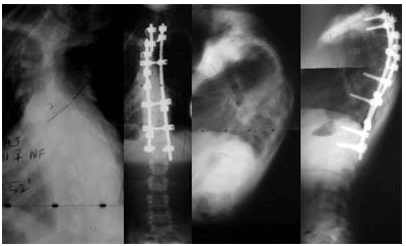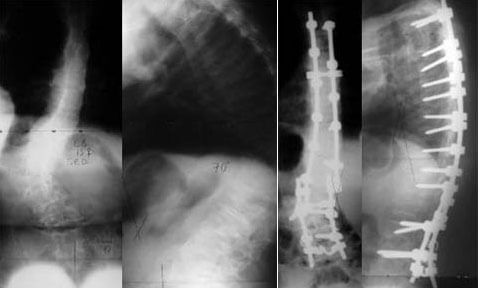Unusual Causes of Scoliosis
Unusual Causes of Scoliosis
There are many causes of scoliosis. There are too many to list and to fully discuss here. A number of unusual types of scoliosis are briefly outlined below.
Marfan’s syndrome
Marfan’s syndrome occurs as a result of a genetic mutation in the chromosome responsible for collagen cross-linking. Patients with Marfan’s Syndrome have a very typical appearance. They are tall and lanky with very long arm spans and long fingers. Abraham Lincoln was thought to have Marfan’s syndrome. Patients typically have associated problems in addition to scoliosis. These include lens dislocation of the eye, widening of the aorta as it exits the heart, heart valve abnormalities, knock-knee deformities, foot abnormalities such as bunions, chest wall deformities, and kyphosis.
Patients with Marfan’s syndrome often have highly progressive curvatures that require surgical intervention. In order to address the potential of spinal imbalance due to laxity of ligaments (ligamentous laxity) that is present in these individuals, long fusions of the spine are required and often done through a combined anterior and posterior approach. An important component of the treatment of patients with Marfan’s syndrome includes careful perioperative care, which focuses on maintaining blood pressure in an acceptable range so as not to jeopardize the condition of the aorta.
Case Example of Marfan’s syndrome

This 15 year old boy with Marfan’s syndrome and severe lumbar scoliosis and kyphosis was treated with anterior and posterior spinal fusion with instrumentation. He subsequently returned to full activity.
Ehler’s-Danlos syndrome
This condition is also a condition of connective tissue in which the gene for elastin is abnormal. This results in severe ligamentous laxity in these individuals who often develop spinal deformities. Similar to patients with Marfan’s syndrome, when surgery is required, a relatively long fusion is generally recommended.
Neurofibromatosis
Neurofibromatosis is a benign generalized tumor condition involving the nerve sheaths of the spinal nerves as they exit the spinal canal. There are four types, Type 1 (NF-1) being most commonly associated with spinal involvement in addition to other potential abnormalities. Spinal deformity manifested as scoliosis or kyphosis may occur as a result of erosion of the bones of the spinal column (dystrophic type) or without specific involvement of the spine.
Patients with neurofibromatosis have skin pigmentation abnormalities or large freckles termed café au lait spots. They may also have benign tumors involving the skin in addition to numerous other manifestations.
Patients with neurofibromatosis may require surgery for scoliosis. This is typically performed with a combined anterior and posterior approach so as to ensure adequate bony healing.
Case Example of Neurofibromatosis
This 11 year old girl with neurofibromatosis had severe scoliosis and kyphosis treated by combined anterior and posterior spinal fusion with instrumentation resulting in excellent balanced correction.
Growth Conditions or Dysplasias
A number of developmental growth abnormalities can occur such as achondroplasia, the most common dwarfism, which is the result of a genetic mutation. There are a number of other dwarfing conditions that are less common, but may also be associated with scoliosis or kyphosis. Patients with these conditions present a special set of circumstances. For example, some patients have very small spinal canals that may require decompression, or laminectomy to remove pressure on the spinal nerve roots or spinal cord. Others have instability of the cervical spine, requiring a stabilizing fusion in the neck.
Case Example of Growth Dysplasia
This 13 year old girl with spondyloepiphyseal dysplasia, a type of growth dysplasia, had a 60° scoliosis and 70° kyphosis treated by anterior-posterior surgery with excellent correction.
There are numerous causes of scoliosis and kyphosis all with their own unique features. Surgery directed at these conditions is tailored to the individual patient and the individual condition.


